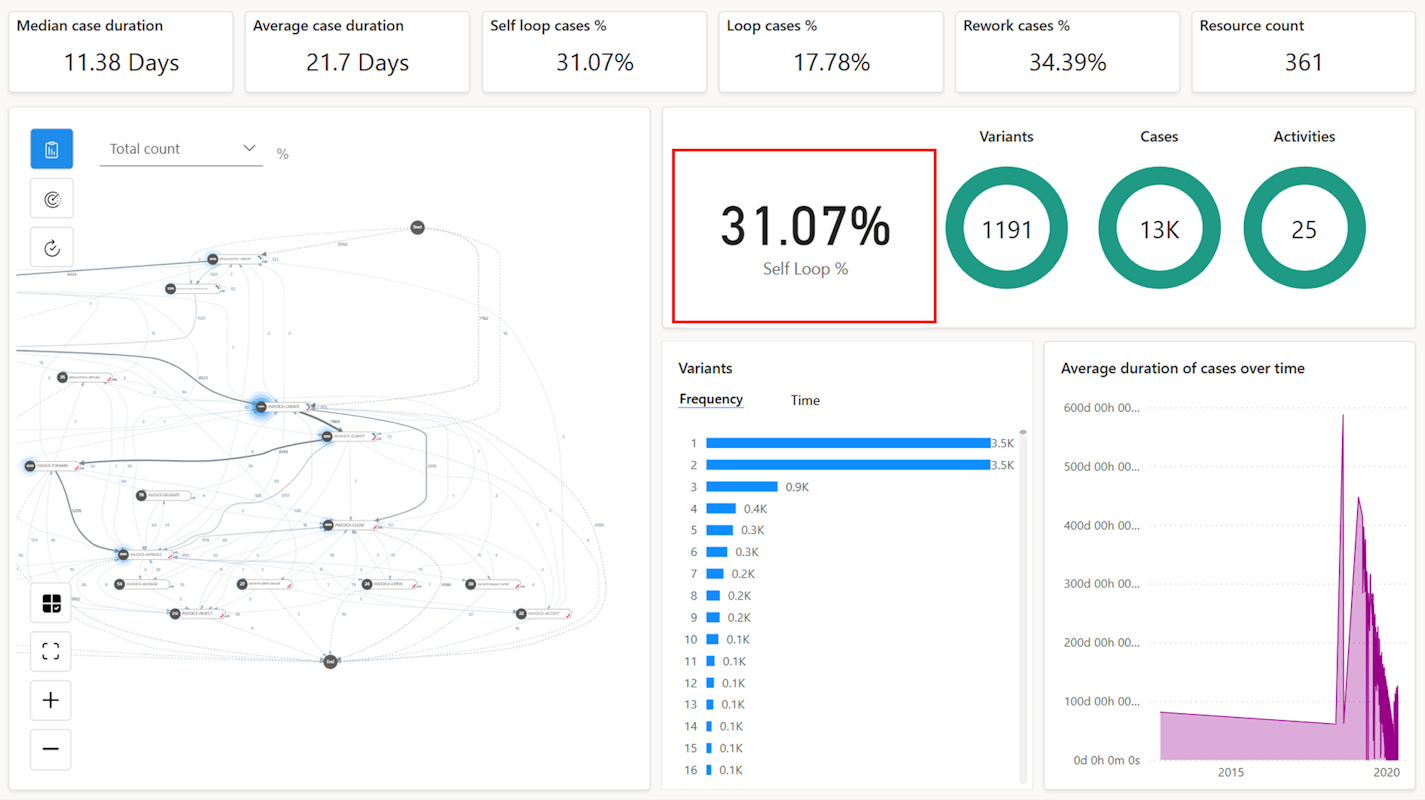Rebind reports using a composite model (different workspaces)
To migrate customizations of your Process Mining report from one workspace to another, follow the steps in this article. Learn more about composite models in Use composite models in Power BI Desktop and Customize reports in Power BI workspace.
If you linked your process in the Test environment to a workspace (for example, WkSpace B) that's different from the one used by the process in the Dev environment (for example, WkSpace A), follow the steps in this section.
Attach a workspace to your process
In the Environments dropdown menu at the top of the screen, select your Test environment.
On the navigation pane to the left, select Process mining.
If your process was newly copied over to the Test environment, there's an exclamation mark inside a speech bubble on the process. This mark indicates that the process was imported.
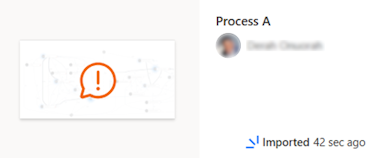
Select the process, and then select Confirm.
If you newly imported the process, continue to step 5. If you didn't newly import the process, go to step 6.
Select a new workspace for this process by following these steps:
In the Power BI workspace dropdown menu, select a different workspace, which you'll use in the Test environment.
In the Report Name field, enter the same report name as your previous report.
Important
The report name must be identical to your previous report.
To continue setting up the process, select Continue.
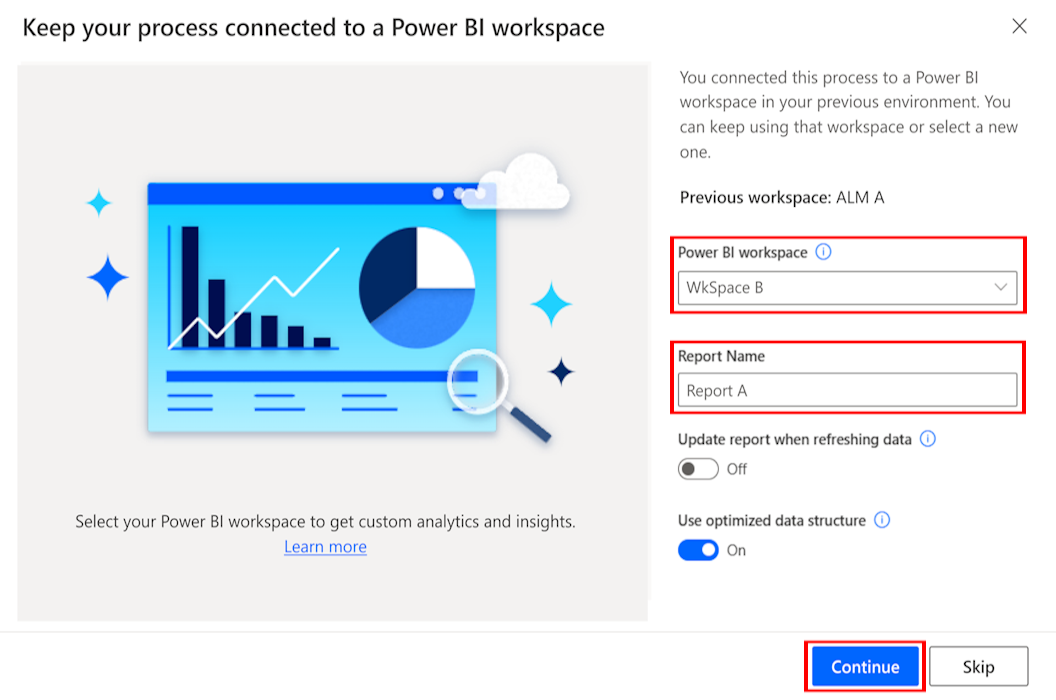
(If you didn't newly import the process) Attach a custom Power BI workspace to the process:
Go to the process details page for the process.
On the Details card, select Edit.
From the Power BI workspace (optional) dropdown menu, select your WkSpace B Power BI workspace that you want to migrate customizations to.
Provide the same report name as the name you used for the process in Dev environment.
Important
The report name must be identical to the report name of the process in Dev environment.
Select Save > Continue.
From the command bar or in the report view, select Refresh data.
- Sign in to Power BI.
Before you get started, ensure that the states of your reports, workspaces, and their lineages correspond to what's in the following sections.
State of your Report A
The following report and its composite model are in WkSpace A. Your report can look like this, or have customizations of your choice.
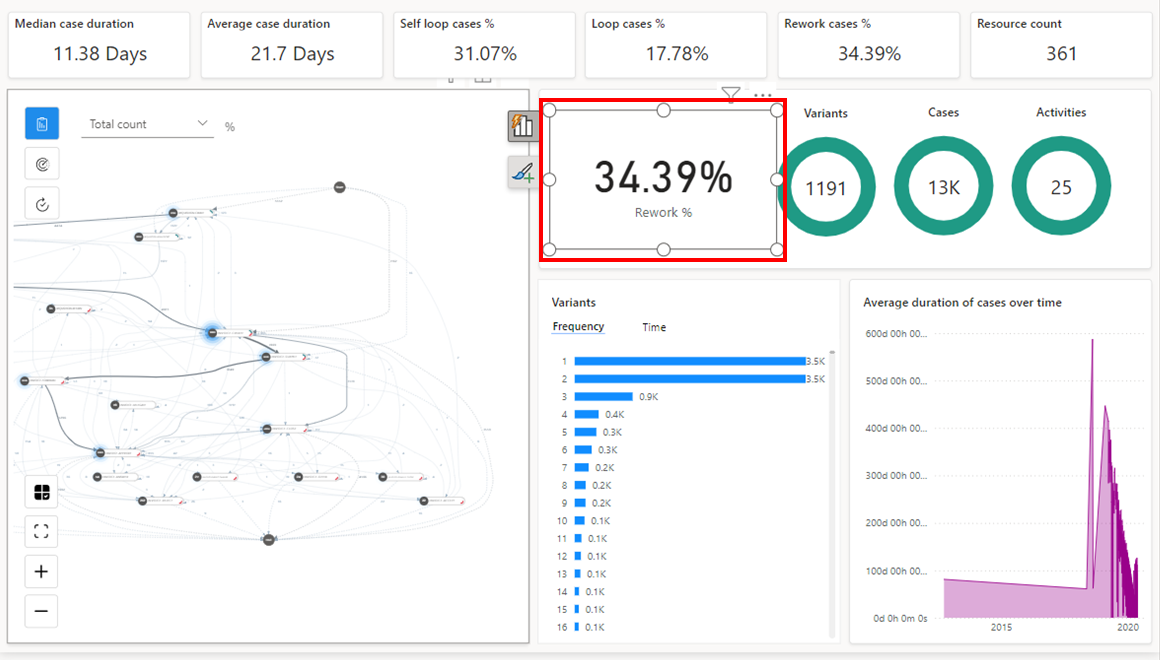
State of your WkSpace A
Your WkSpace A should have the following entities:
| Number | Description | Entity |
|---|---|---|
| 1 | The original report of your process. | Report A |
| 2 | The original semantic model of your process. | Report_A_Dataset_206… |
| 3 | The updated report with the composite model. | Report A |
| 4 | The composite model. | Report A |
The numbering corresponds with the numbering of entities in the following screenshot.
There are three (3) entities titled Report A. You can differentiate them using their icons and their Refreshed timestamps:
The icon with the yellow bars represents the reports. The other icon is that of the composite model or semantic model.
The report with the same Refreshed timestamp as the composite model is the report of the composite model.
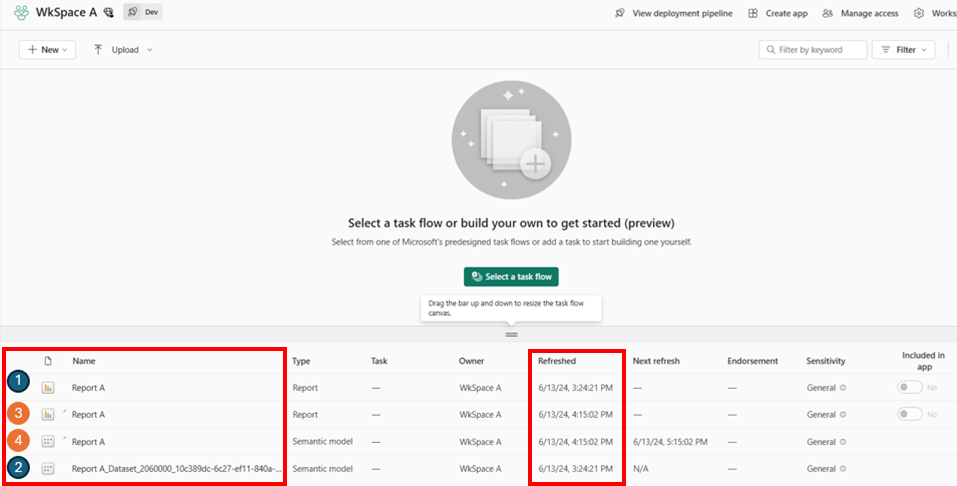
Your lineage view should look like the following screenshot. The semantic model points to the composite model, which then points to a report.

State of your WkSpace B
Your WkSpace B should have the following entities:
| Number | Description | Entity |
|---|---|---|
| 1 | The original report of the process you transferred from the Dev environment. | Report A |
| 2 | The original semantic model of the process you transferred from the Dev environment. | Report_A_Dataset_206… |
The numbering corresponds with the numbering of entities in the following screenshot.
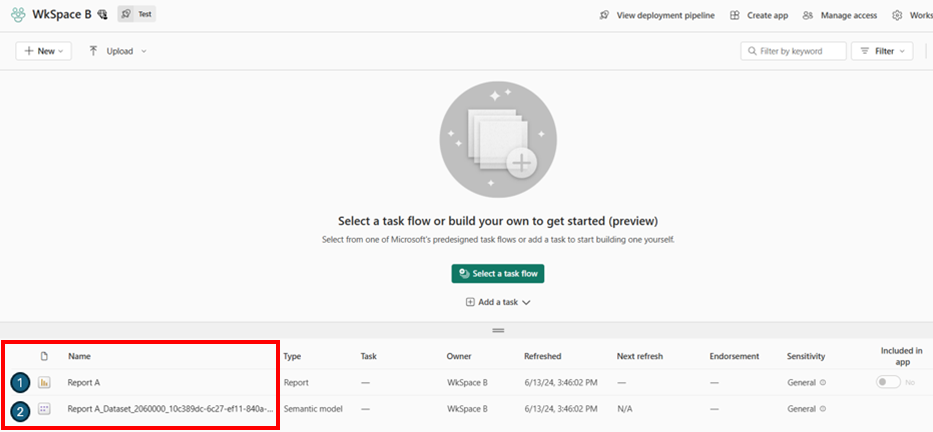
Your lineage views should like the following screenshot. A semantic model points to a report:

To understand the distinctions between each entity, familiarize yourself with the entities before you proceed.
Rebind the report in Power BI
Sign in to Power BI.
Navigate to your WkSpace A.
From the list of entities, select the three dots beside the composite model, and then select Download this file.
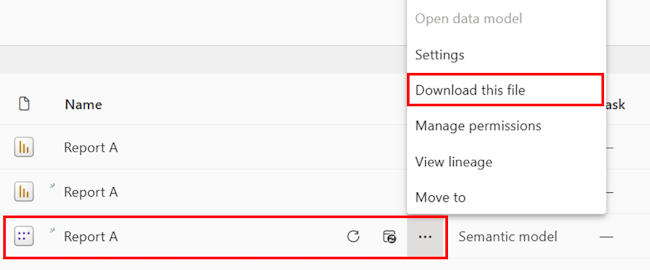
In Power BI desktop, open the downloaded file.
From the home tab, select Transform data > Data source settings. Notice the Direct Query connection in the Data source settings.
Select Change Source.
Search for and select for the semantic model of the process that was created in Test. Its semantic model is in your WkSpace B.
Select Create.
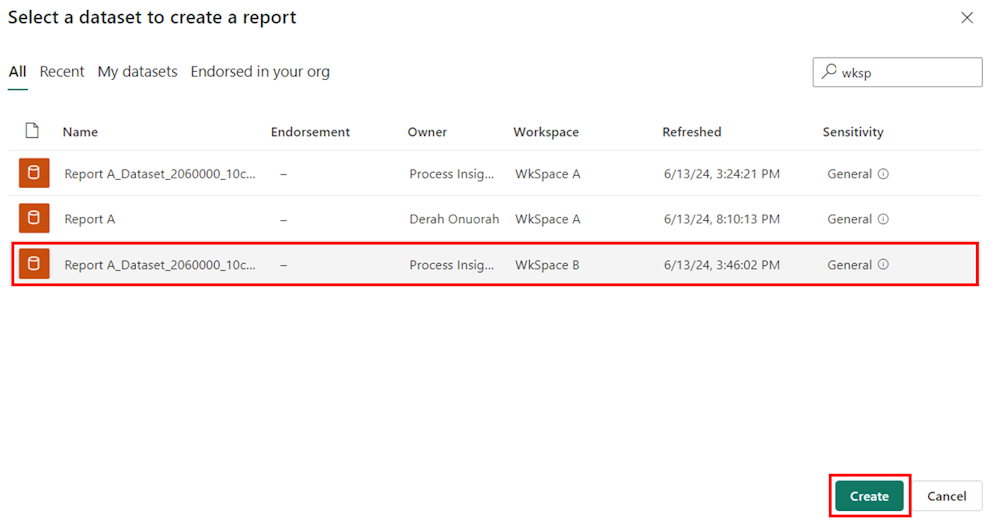
When the Connect to your data message appears, select relevant tables, and then select Submit.
When the query changes are applied, select Close.
Save the report.
From the Home tab, select Publish.
Select your WkSpace B as the destination, and then choose Select.
When the publishing completes, go to your WkSpace B in Power BI to confirm the changes were applied.
The lineage view now shows the composite model. In the following screenshot, it's the first red box.

Select the Report A that the composite model points to. In the previous screenshot, it's the second red box.
Select Open report.
The report looks like that of the composite model from WkSpace A with the Self Loop percentage in the report.
